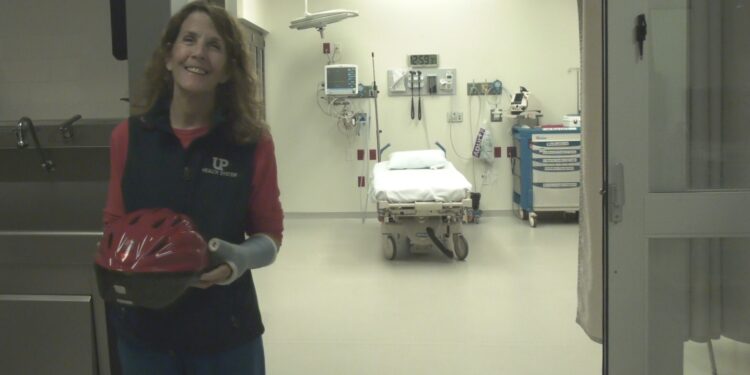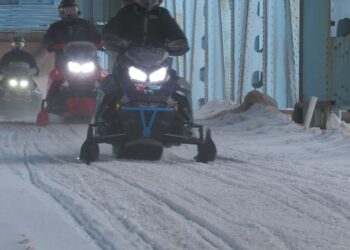MARQUETTE, Mich. (WZMQ) – As more people dust off their bikes for the summer, it’s important for cyclists to have the right safety equipment. Biking is a popular pastime in The UP, but it’s always crucial to make sure you wear a properly fitted helmet, even for a trip around the block.
The Highway Traffic Safety Association reports, bicycle accidents are the 5th leading cause of injury in kids 4-14 years old in The US, and nearly 40 thousand children in that age group visit The ER each year with traumatic brain injuries related to bike accidents.
Ann Clancy-Klemme is a injury prevention coordinator with UP Health Systems – Marquette. She says, making sure you’re using the right helmet for your chosen biking activity and fitting it correctly is the best way to protect against concussions and other serious head trauma.
“If you’re going to tell your children to wear a helmet, the best way to get them to collaborate with that is to wear a helmet yourself.” Clancy-Klemme says, “It’s not a ‘do as I say, not as I do’ but ‘watch what I do and follow me.’ “
In places like Marquette, it’s common to see cyclists sharing the road with vehicles. If an crash happens, wearing a CPSC certified helmet can help reduce chances of a skull fracture or brain injury.
Bicycle crashes are the 5th leading cause of injury in children, and kids biking without helmets are three times more likely to sustain a serious injury than helmeted bikers.
“If I were to fall off my bicycle right now and injure my arm, they could put it in a cast, and it would protect it and it would heal,” Clancy-Klemme explains, “we can’t do the same thing for our head.”
Vehicle-related injuries or crashes involving motor vehicles and bicycles, are the third most common cause of traumatic brain injuries. Yearly, 1,000 people die from biking accidents and 350,000 go to emergency rooms for injuries related to bicycling accidents, that more than the entire UP population.
Clancy-Klemme says it’s all too common for bikers to go without a helmet that’s properly fitted. A properly fitted helmet should sit roughly two finger lengths above the eyebrows, straps flat against the head with the dividers under the ears, and the buckle should be snug underneath the chin.
“There absolutely is a right and a wrong way and if you don’t wear it the right way it’s not going to be effective.” She explains, “It should be well fitting, when you move your head, it shouldn’t go the opposite way that you’re moving, it should be very snug”
Clancy-Klemme says its important to remember more than just your helmet to stay safe. Know the proper areas to ride a bike, the rules of that area, and wear reflective clothing at night to increase visibility and prevent crashes.


















